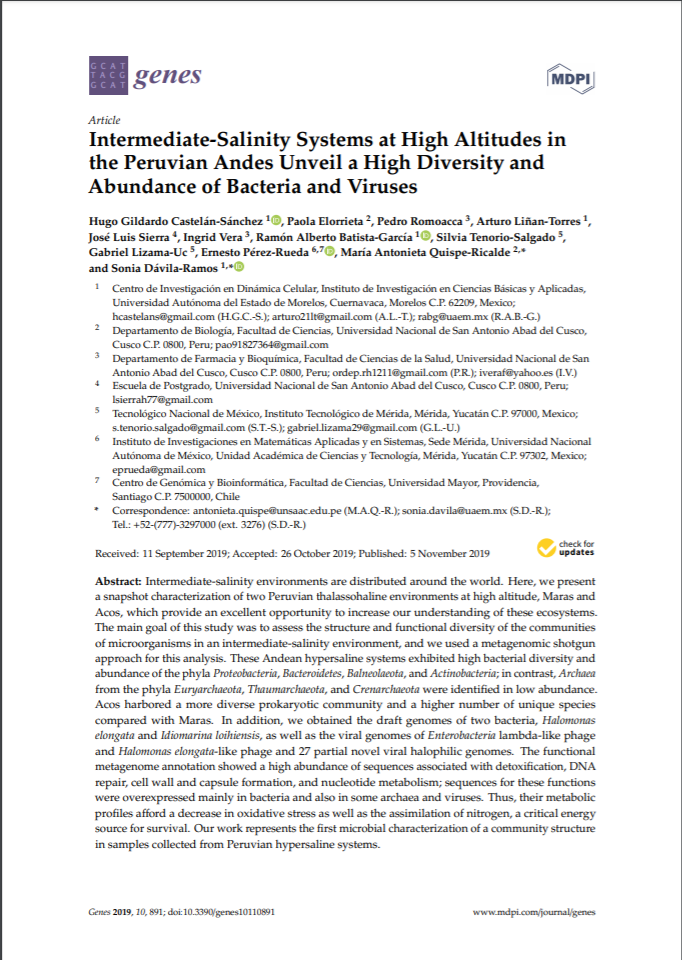Intermediate-Salinity Systems at High Altitudes in the Peruvian Andes Unveil a High Diversity and Abundance of Bacteria and Viruses

Fecha
2019Autor
Pérez-Rueda, Ernesto [Univ Mayor, Fac Ciencias, Ctr Genom & Bioinformat]
Gildardo Castelan-Sánchez, Hugo; Elorrieta, Paola; Romoacca, Pedro; Linan-Torres, Arturo; Luis Sierra, Jose; Vera, Ingrid; Alberto Batista-Garcia, Ramon; Tenorio-Salgado, Silvia; Lizama-Uc, Gabriel; Antonieta Quispe-Ricalde, Maria; Davila-Ramos, Sonia
Ubicación geográfica
Notas
HERRAMIENTAS
Acceda a títulos restringidos
¿Cómo descargar?Resumen
Intermediate-salinity environments are distributed around the world. Here, we present a snapshot characterization of two Peruvian thalassohaline environments at high altitude, Maras and Acos, which provide an excellent opportunity to increase our understanding of these ecosystems. The main goal of this study was to assess the structure and functional diversity of the communities of microorganisms in an intermediate-salinity environment, and we used a metagenomic shotgun approach for this analysis. These Andean hypersaline systems exhibited high bacterial diversity and abundance of the phyla Proteobacteria, Bacteroidetes, Balneolaeota, and Actinobacteria; in contrast, Archaea from the phyla Euryarchaeota, Thaumarchaeota, and Crenarchaeota were identified in low abundance. Acos harbored a more diverse prokaryotic community and a higher number of unique species compared with Maras. In addition, we obtained the draft genomes of two bacteria, Halomonas elongata and Idiomarina loihiensis, as well as the viral genomes of Enterobacteria lambda-like phage and Halomonas elongata-like phage and 27 partial novel viral halophilic genomes. The functional metagenome annotation showed a high abundance of sequences associated with detoxification, DNA repair, cell wall and capsule formation, and nucleotide metabolism; sequences for these functions were overexpressed mainly in bacteria and also in some archaea and viruses. Thus, their metabolic profiles afford a decrease in oxidative stress as well as the assimilation of nitrogen, a critical energy source for survival. Our work represents the first microbial characterization of a community structure in samples collected from Peruvian hypersaline systems.
Coleccion/es a la/s que pertenece:
Si usted es autor(a) de este documento y NO desea que su publicación tenga acceso público en este repositorio, por favor complete el formulario aquí.